Kuwai, commonly known as arrowhead, is a unique and versatile aquatic plant cherished in Japanese cuisine, especially during the New Year celebrations. In this article, we’ll explore the fascinating history of Kuwai, its cultural significance, and the various ways it can be enjoyed in Japanese dishes.
What is Kuwai?
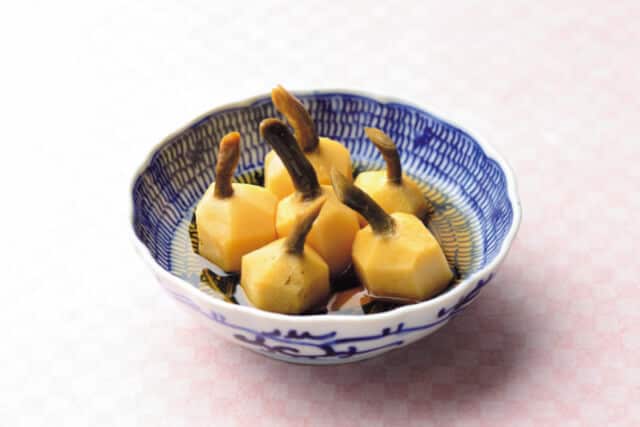
Kuwai (くわい) refers to the arrowhead plant, known for its unique tuber-like roots that resemble small, round bulbs. It is an essential vegetable for New Year’s cuisine, as locals considered this an auspicious item with “sprouts (eyes) coming out” due to how the sprouts grow from the round tuber. Locals include Kuwai in Osechi Ryori —the celebratory New Year’s meal—due to its resemblance to a bud, which signifies growth and the hope for new beginnings.
Kuwai History
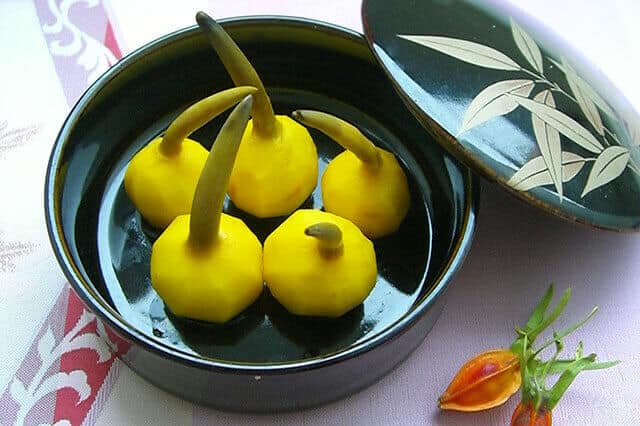
Kuwai, a traditional crop in Japan, has a rich cultivation history dating back to the early Meiji era. It first took root in Saitama’s semi-wet fields near Tokyo, particularly in Soka, Kawaguchi, and Iwatsuki, where rice cultivation was challenging. Kuwai thrived alongside lotus root due to the region’s damp conditions, and by the late Meiji period, its production had expanded nationwide, with notable areas in the Kanto and Kansai regions, including Saitama, Tokyo, Osaka, and Kyoto. Throughout the Taisho period and into the Showa era, Kuwai became an essential cash crop, particularly during the Great Depression, as farmers increasingly relied on it. However, during World War II, Kuwai cultivation slowed as fields were repurposed for food production. After the war, production resumed but began to decline around 1955 due to urbanization and the labor-intensive methods required, limiting its cultivation to select areas within Saitama.
Reference: Saitama Prefecture Article
Kuwai Auspicious Meaning in Osechi
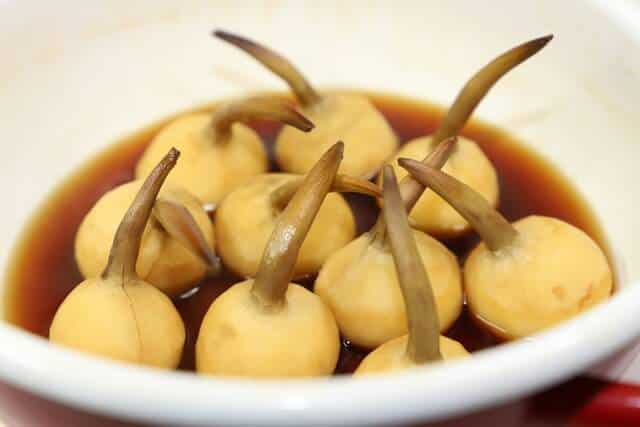
In osechi ryori (Japanese New Year’s cuisine), kuwai (慈姑), also known as “arrowhead” in English, holds an auspicious meaning tied to growth, success, and advancement. Its name is a homophone for words associated with progress, making it a traditional symbol for achieving milestones or rising in one’s career. Additionally, the shape of the kuwai, which resembles a budding plant, symbolizes the wish for children to grow strong and successful. This symbolism of good fortune and progression aligns with the New Year’s celebration, where locals choose osechi foods to convey blessings for health, prosperity, and fulfillment in the coming year.
Kuwai Production Area
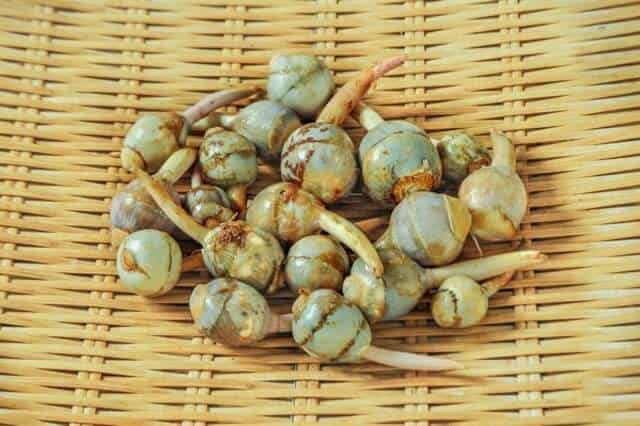
Fukuyama’s warm climate and abundant sunlight in the Seto Inland Sea region create ideal conditions for cultivating green arrowheads. The practice begun around 1902, when wild arrowheads from the marshes in Sendamachi introduced to the fertile moat around Fukuyama Castle. Furthermore, during the Edo period, the Fukuyama Domain expanded agricultural fields and constructed an extensive irrigation system fed by the Ashida River, ensuring a steady water supply. This favorable environment helped establish Fukuyama as a prime area for arrowhead cultivation.
Nutritional Benefit of Kuwai

Kuwai is a highly nutritious vegetable that offers an abundance of health benefits. It is rich in B vitamins such as biotin, as well as key minerals like potassium and zinc. The potassium it contains helps promote the excretion of sodium, which can aid in reducing swelling and preventing high blood pressure. Additionally, the dietary fiber in Kuwai supports healthy digestion and intestinal function.
Beyond its mineral and fiber content, Kuwai also provides valuable vitamins like vitamin C, which can benefit skin health and combat fatigue. It is an excellent source of vitamin E, folic acid, copper, and pantothenic acid as well, making it a well-rounded addition to any diet. Despite being low in calories, it packs a serious nutritional punch, making it an ideal food choice for those focused on their overall wellness.
Characteristics and How to eat?
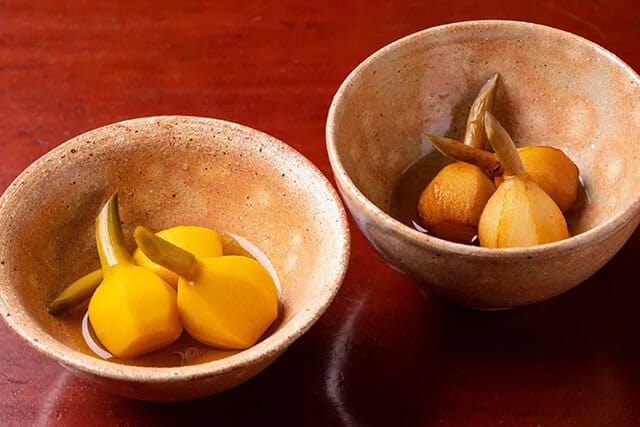
Kuwai has a distinct flavor that balances bitterness with a subtle sweetness. When cooked, it takes on a fluffy and crunchy texture. Locals fequently used this in Japanese cuisine in dishes like boiled or simmered preparations, but you can also enjoy this deep-fried, stewed in cream, or paired with arrowhead rice for a delicious twist.
FAQ
Kuwai can be eaten raw, and when thinly sliced and added to a salad, you can enjoy its crunchy texture.
The peak season for kuwai is mainly from November to January of the following year, with December being the peak shipping period. During this time, kuwai tastes the best and its appeal as an ingredient increases.
Takeaway
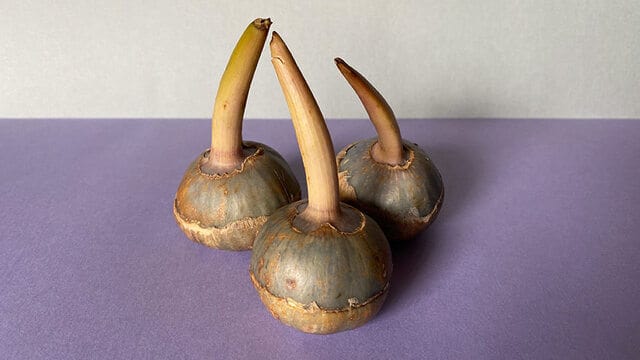
As you explore the diverse flavors of Japan, we encourage you to seek out this unique aquatic plant. Whether featured in traditional osechi ryori during the New Year or in various regional dishes. Its distinct taste and texture make it a delightful culinary adventure worth experiencing.
You can try out other Osechi dishes we recommend below that will make you know more about Japan’s culture.
Osechi Ryori
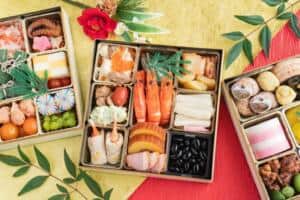
Osechi (おせち) Introduction to Osechi Osechi Ryori is indispensable for the Japanese New Year. Additionally, each dish has a congratulatory meaning. In addition to that, th…
Chorogi
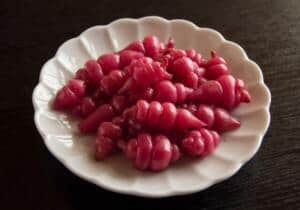
Chorogi (チョロギ) Introduction to Chorogi After the celebration of Christmas, New Year is coming! Everyone looks forward to the new year being the year of healing, blessings, …
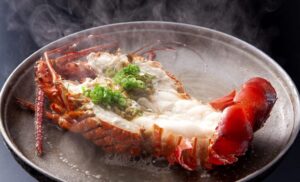
Ise ebi (伊勢海老) Ise ebi, or Japanese spiny lobster, is a prized delicacy in Japan, known for its sweet, tender meat and deep cultural significance. From festive New Year’s d…

 1 day ago
4
1 day ago
4
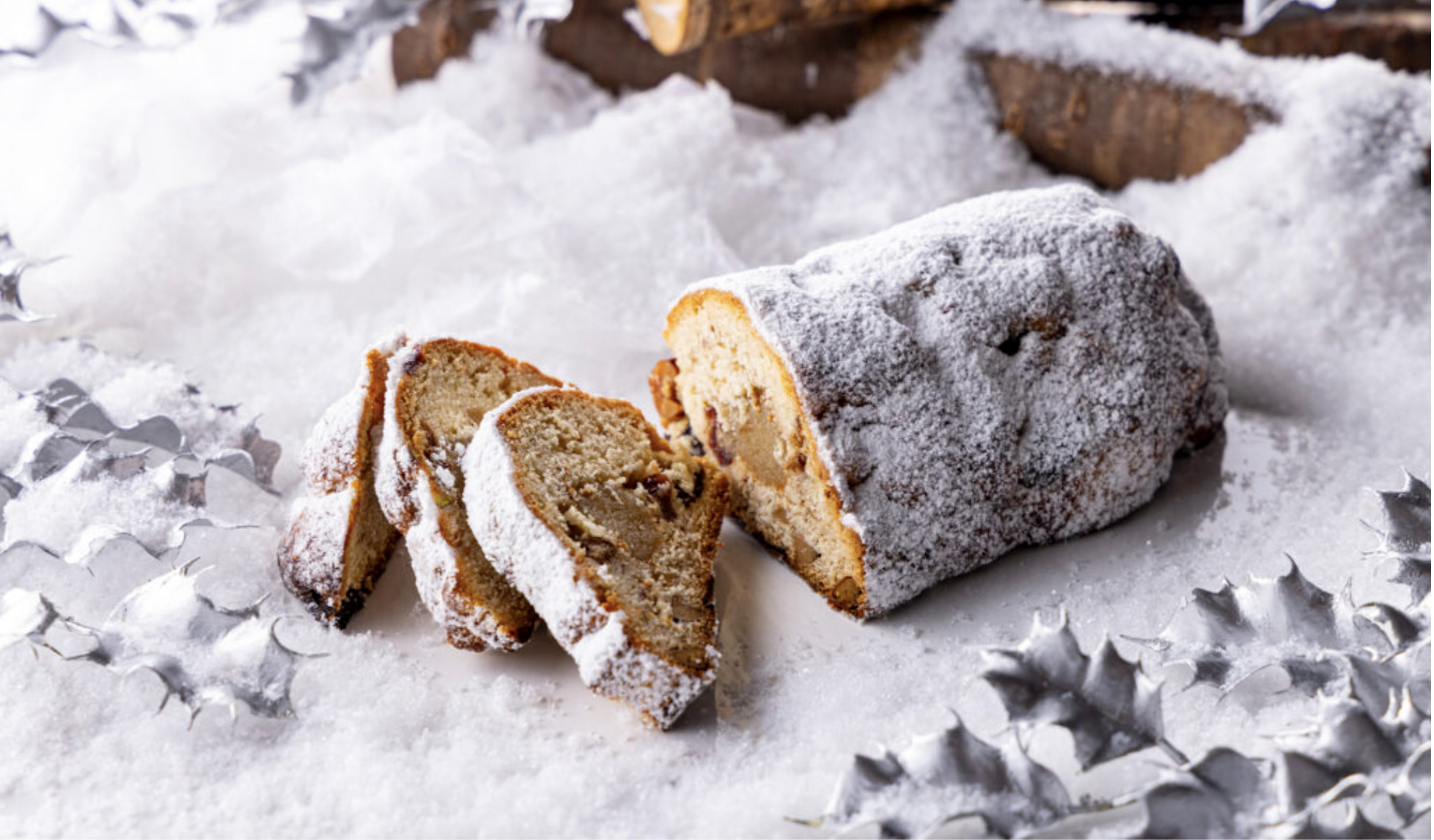





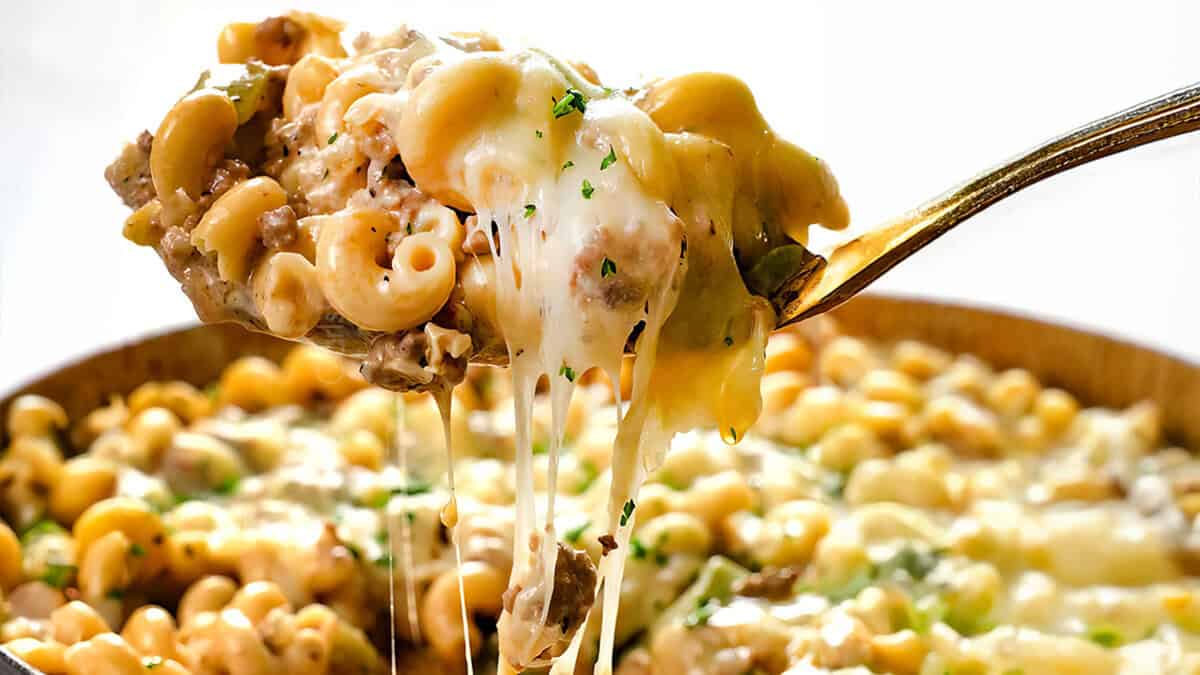


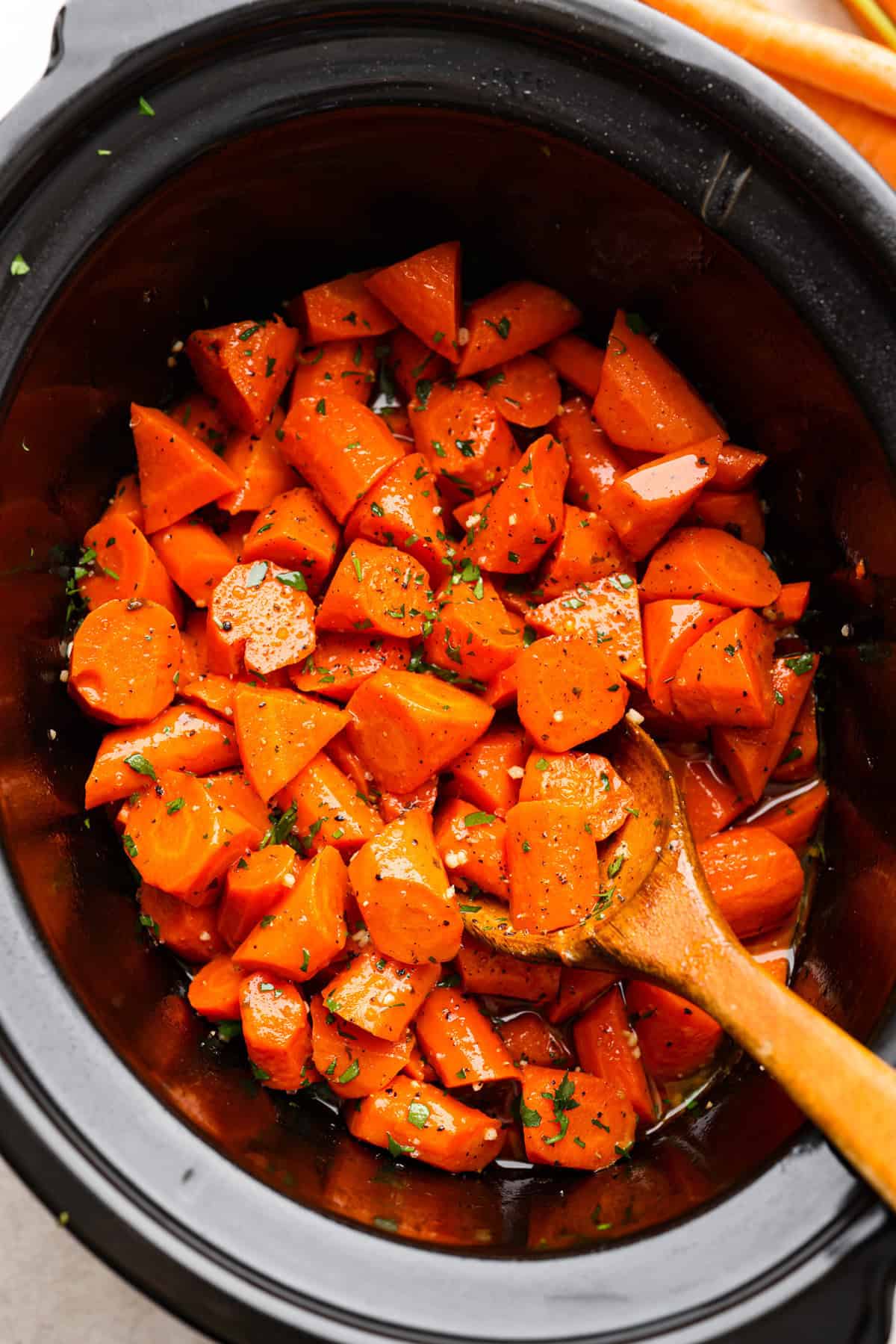
 English (US) ·
English (US) ·